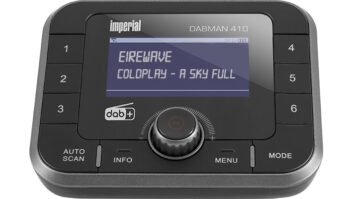WorldDMB, which promotes Eureka-147 DAB services in global markets, has announced details of plans to create a choice of audio coding for Digital Audio Broadcasting.
They say they’ve been in confidential discussions with several governments and regulators who will take this move as a green light to commit to DAB.
The organization is submitting a draft tech specification called “DAB Audio Broadcasting (DAB); Transport of AAC Audio” to the standard body ETSI and hopes receivers can be designed and broadcast services introduced starting next year.
The draft specification defines the way that audio services are carried when using MPEG 4 HE AAC v2. Negotiations are under way for the licensing rights but a deal has not been concluded.
For now internal planners are calling this “Working Title Optional Audio Codec” but marketing experts are working on a consumer-friendly name.
DAB broadcasters have been using MPEG Audio Layer II coding since its early days. The organization says more efficient coding schemes and algorithms have since been devised. “These would allow audio with equivalent or better subjective quality to be broadcast at lower bit rates,” the organization stated.
In 2005, its technical committee was asked to investigate options for adding a high-efficiency audio coding scheme alongside MPEG Audio Layer II. “The proposal being submitted to ETSI allows for the parallel use of both audio coding options and ensures that existing listeners and DAB digital radios will not be disrupted and receivers which include the new high-efficiency codec will also decode all standard MPEG Audio Layer II audio services.”
The chairman of the committee, Frank Herrmann, said the task force “took account of the special conditions and transmission parameters needed for challenging mobile and fixed reception conditions. This work represents some of the most advanced techniques for broadcasting digital radio services.”
WorldDMB said the latest MPEG-4 audio codec delivers exceptional performance efficiency. The move also will allow more stations to broadcast on a multiplex, provide more consumer choices and lower transmission costs.
The proponents said broadcasters and regulators will be able to choose the right coding solution for them. In some markets, they said, governments want a highly efficient codec for radio services; it mentioned Australia as an example. “In more developed markets where DAB has achieved significant penetration including the U.K., Denmark and Norway, broadcasters intend to continue to broadcast all digital radio stations using MPEG Layer II for the foreseeable future.”
DAB proponents said they’ve been in confidential discussions with several governments “who have been very keen to start digital radio broadcasting. They welcome the publication of this specification.” They think the move will give those countries increased confidence to commit to Eureka-147.
DAB Proponents Push for AAC Audio Option
DAB Proponents Push for AAC Audio Option







